17. Zoom (Pedro Morelli)

Morelli’s splendidly offbeat sophomore feature toys with the themes of our insecurities, personal identity, higher forces, self-reliance, stereotypes and sexuality in the triplet of tightly interconnected, meta-fantastic stories. With its knotty loop-the-loop structure that is probably inspired by Escher’s lithograph “Drawing Hands”, it’s twice as strange as “Stranger than Fiction”.
Stuck in the inescapable reciprocity of authoring each others’ lives are a comic book artist, Emma, a blockbuster director, Edward, and an aspiring writer, Michelle. Riding a cinematic ouroboros of the whacky kind, they all play God and do so unknowingly, until they – as creations – realize someone “from above” seriously messes with them.
Meditating on the idea of being the slave and the master at the same time, Morelli puts enviable chameleonic skills at display here, by easily adapting to diverse styles of filmmaking.
16. In the Crosswind (Martti Helde)
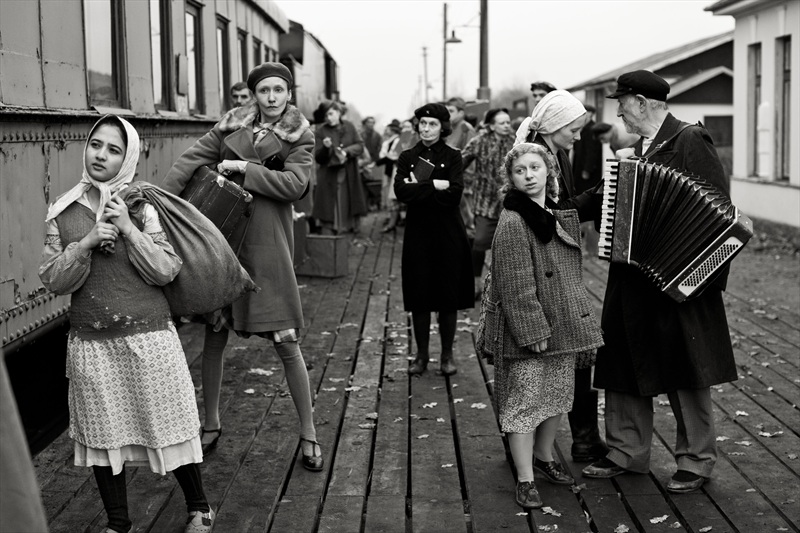
An impressive feature debut by the young Estonian director Martti Helde – who, presumably, takes the notes from Chris Marker, Miklós Jancsó, Andrey Tarkovsky and Béla Tarr – is the paragon of technical perfection. Consisting of only thirteen long takes emulating “a walk through a sculpture garden”, in the author’s words, and a few dreamlike, “conventionally” shot sequences of Malickian beauty, this bleakly poetic war drama hypnotizes its viewer like no other.
The string of magnificent, meticulously composed tableaux vivants in which the actors are, literally, frozen in time, with a blink of an eye or a fluttering shawl “betraying” the stillness, tells the story of Stalinist monstrosities in the most solemn, poignant and dignified manner possible, never resorting to explicitness.
Helmed with the steady hand and accompanied by the leading lady Laura Peterson’s euphonious voiceover, these “living B&W photographs” leave deep impact on the viewer.
15. Lost and Beautiful (Pietro Marcello)
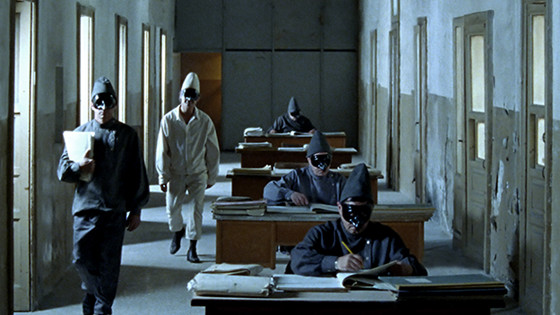
What if a soul is not exclusively human? This is the question Pietro Marcello tries to answer with his latest feature – a documentary rearranged as a unique docu-fantasy following the death of “the Angel of Carditello” (Tommaso Cestrone – the farmer turned voluntary castle caretaker). Viewed through the teary eyes of a buffalo, Sarchiapone, who is taken to the abattoir, the story deals with time’s transience and focuses on a dichotomy of cruelty and kindness / life and death.
On the journey of the aforementioned animal and his guide who is none other than Pulcinella (the classical commedia dell’arte character), our breaths are taken away by the rural vistas of Italy’s south-western region, as well as by the aged objects in various stages of decrepitude wonderfully captured by Marcello’s keen eye. The title couldn’t be more appropriate.
14. Harmony (Michael Arias & Takashi Nakamura)
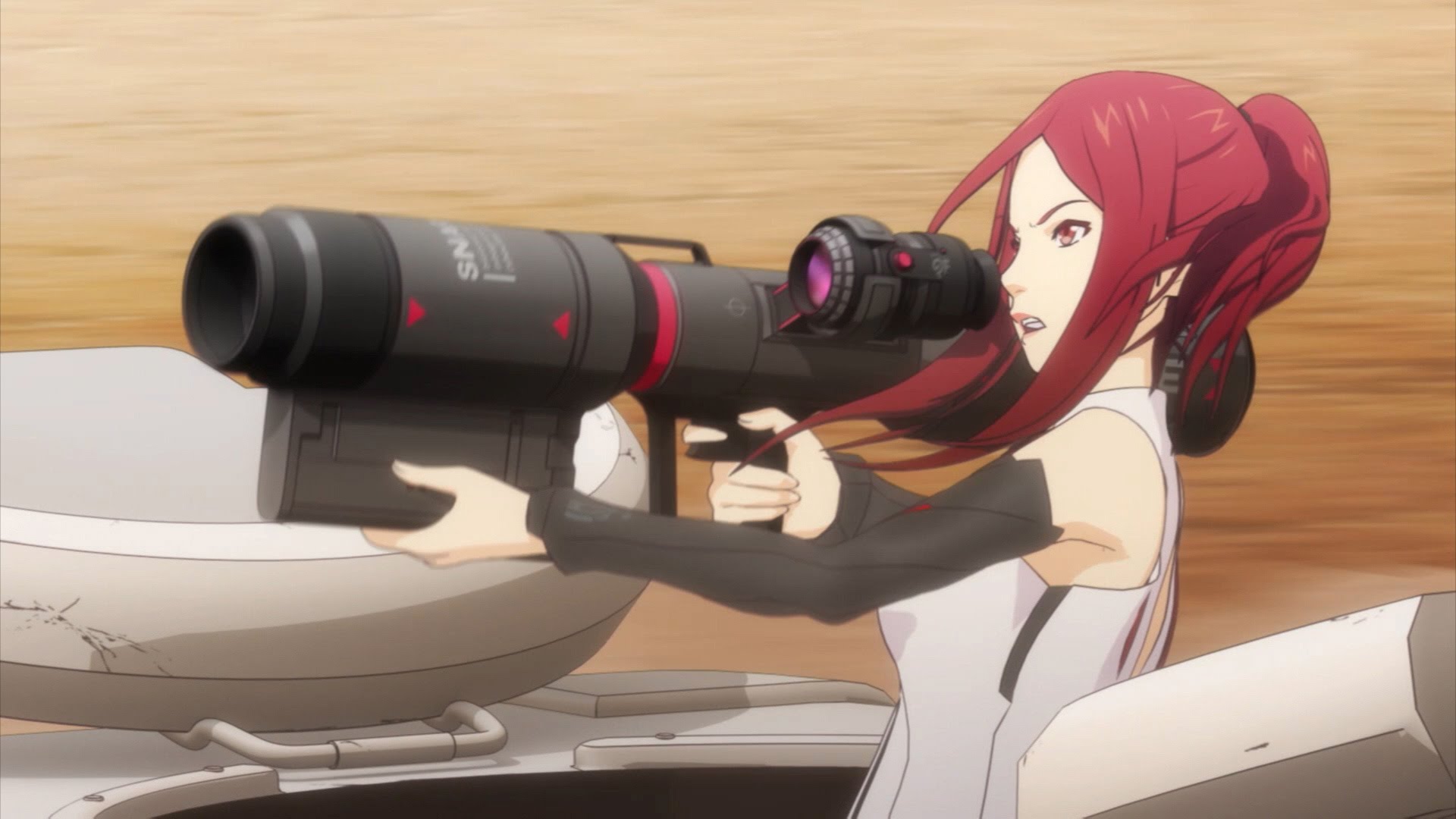
Yet another Project Itō adaptation on the list is set in the late 21st century, after the cataclysm dubbed “Maelstrom”, in the brave new world resting on the flawless healthcare and strong ethical principles. This utopia seems like a slow-aging paradise until the thousands of people across the planet commit suicide at the same time.
Together with Koji Yamamoto who also wrote the screenplay for “The Empire of Corpses”, Arias (Tekkonkinkreet) and Nakamura (A tree of Palme) stay true to the source work in the transposition of stylistic features and multi-layered ideas, notwithstanding the limited running time. The edgy critique of modern society is imbued with irony, as the characters (and the audience) are challenged by many dilemmas.
Their search for solutions is rendered in the seamless blend of traditional and cel-shaded animation, with colors playing a big role and the score humming unobtrusively, in harmony (pun intended!) with outstanding visuals.
13. Poison Berry in My Brain (Yūichi Satō)
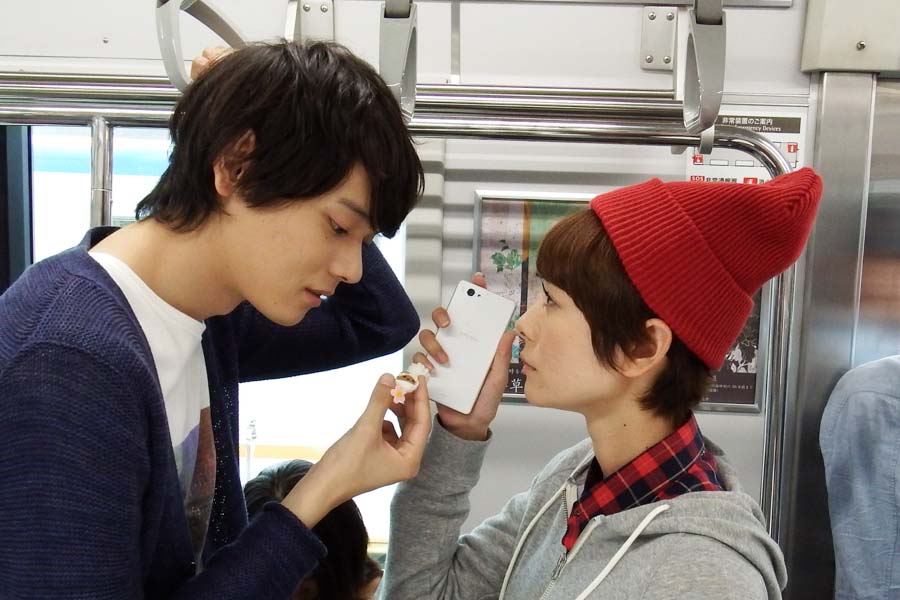
A deliciously bittersweet dramedy “Poison Berry in My Brain (Nōnai Poizun Berii)” is based on Setona Izushiro’s manga of the same name and it recounts the quirky “Amélie” meets “Inside Out” love story of Ichiko Sakurai. Superbly portrayed by the amiable Yōko Maki, the (puzzle-headed) heroine falls for a much younger guy, Ryoichi Saotome (the heartthrob Yūki Furukawa), which starts a heated debate between the five personas who control her brain.
The brilliantly overacted members of this seldom tuneful quintet (chairman Yoshida, optimistic Ishibashi, pessimistic Ikeda, impulsive Hatoko and nostalgic Kishi) are the movie’s very fun factor, but they also form a significant part of the emotional core.
When their noisy discussions reach the breaking point, they’re interrupted by a mysterious femme fatale who is, symbolically, also played by Maki in a sexy attire which makes her unrecognizable. And Satō directs with great precision, managing to avoid many trappings of romantic comedies.
12. Love & Peace (Sion Sono)
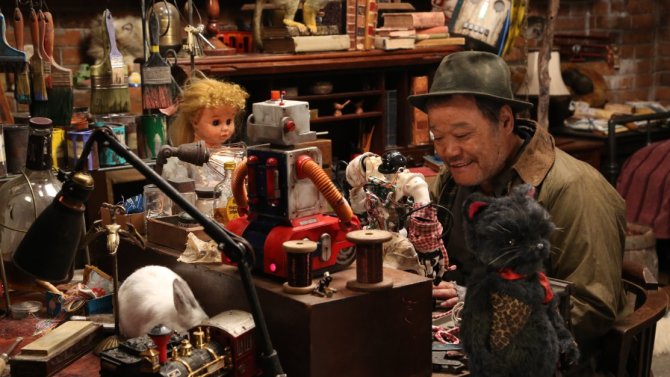
The naughty and versatile Sion Sono takes a shot at the family film and delivers an attractive urban “fairy tale” of a demure and bullied white collar worker, Ryoichi, who transforms into an egotistic rock-star by accident or rather, with a magical help of his pet-turtle Pikadon.
What Sono actually does is merging a romance, slapstick comedy, puppet fantasy, Christmas sales, J-pop posing and ironic homage to “kaiju” features into an accessible satire of Japanese society, reminding us not to forget who we are. A jolly chaos that only he is able to control defies the trends via old-fashioned special effects which reflect his eccentricity, idiosyncrasy, anarchical spirit and love for the art.
“Love & Peace” is simultaneously funny, weird, touching, melancholic, infantile and very mature, escapist and rooted in our reality, with a rich gallery of characters, both alive and animated.
11. Creepy (Kiyoshi Kurosawa)
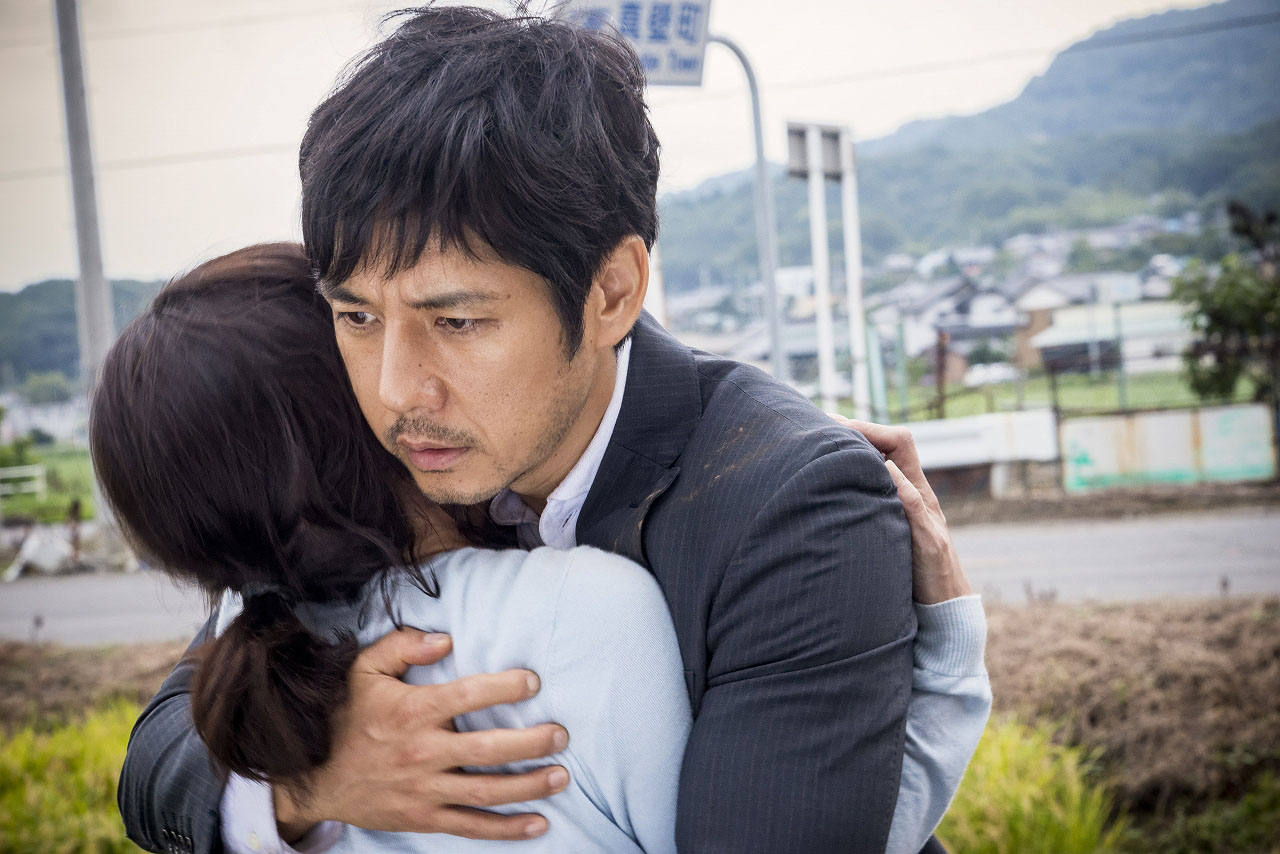
At the request of his colleague, a former detective turned professor, Takakura, reopens the 6-yo case of a missing family and follows the only surviving member, Saki. In the meantime, he and his wife Yasuko move to a new home, only to realize their first neighbor, Nishino, is a weird and whimsical fellow, to say the least. One day, Nishino’s daughter tells him that the man is not her father, but a complete stranger…
From that point on, the thick, overwhelming atmosphere Kurosawa has already established becomes even thicker, while Teruyuki Kagawa who portrays Nishino intensifies the skin-crawling sensation with each piercing look and unnerving smile he puts on his face. You wonder if he is even human, but you have no doubts about the film’s title.
Masterfully directed, shot with cool precision and offering well-rounded performances, “Creepy” is a psychologically tense thriller which makes the reality of living in today’s world of familial and social decay scarier than ever.
10. Greetings from Fukushima (Doris Dörrie)
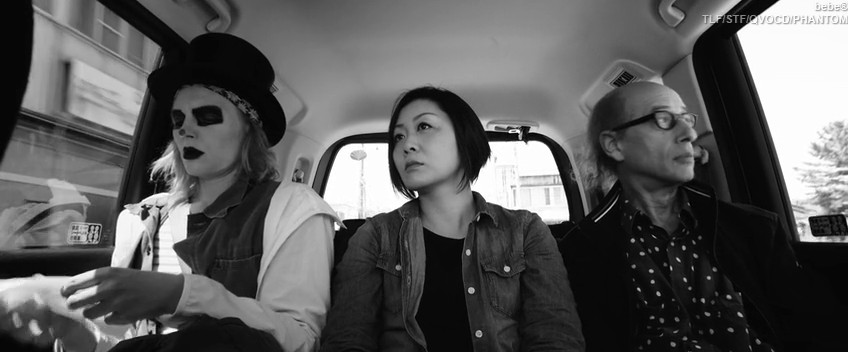
Depicting the cultural clash of East and West with gentle, yet confident strokes, Doris Dörrie wraps her film in rich (and mutable) emotional textures, while making it quite flexible regarding the genre. “Greetings from Fukushima (Grüße aus Fukushima, aka Fukushima, mon Amour)” begins as a deeply melancholic drama and ends with its protagonists smiling and transformed.
Rendered in stark B&W, it chronicles the bonding of an unlikely pair – a young, spoiled and disoriented German woman, Marie, and an aged, grumpy and stubborn Japanese woman, Satomi – in the aftermath of the 2011 earthquake and nuclear disaster. Their involving and inspiring tale of blooming friendship and recreating a life from the ashes emphasizes the importance of the present moment in overcoming the ghosts of our past for the happier future.
9. Miss Hokusai (Keiichi Hara)
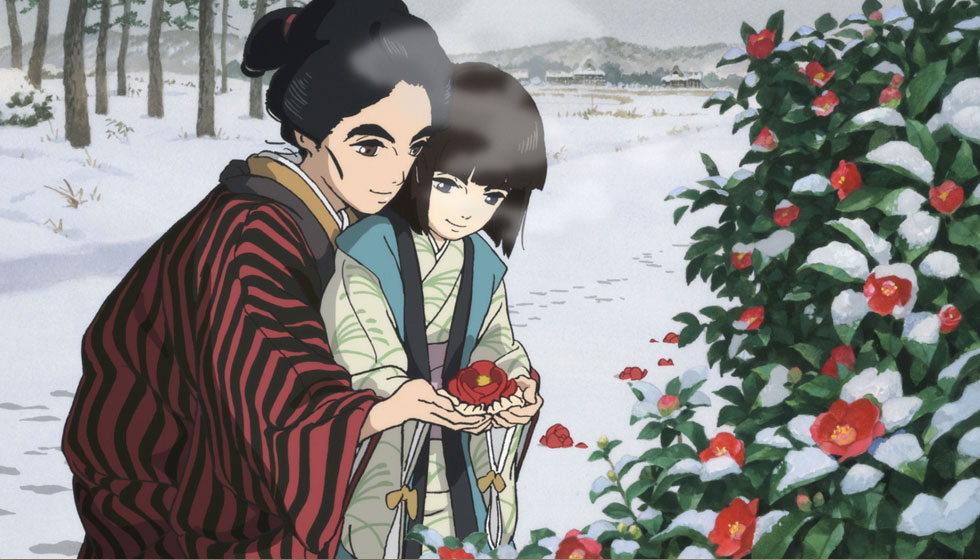
Little or nothing is known about O-Ei Katsushika, a daughter of the renowned Edo ukiyo-e painter Hokusai Katsushika (The Great Wave off Kanagawa), even though there are many indications that she is “the ghost artist” behind some of his works. So, in a fit of poetic justice, Keiichi Hara adapts Hinako Sugiura’s manga “Sarusuberi” which chronicles her life into a sincere, beautifully animated magic-realist biopic drama.
Through the several anecdotic episodes from O-Ei’s youth, he portrays her as a woman ahead of her time – sharp, serious, talented, eccentric and fully aware of her inferior social status beyond her father’s atelier. Entrusting her with the role of narrator, he deals not only with her great skills, but with her relationship to Hokusai and his students, her wooers and younger (and blind) sister O-Nao whom Katsushika is ashamed of.
The little O-Nao is the very reason why the soundscapes, including the restrained voice-acting, get as much attention as the handsome aesthetics.